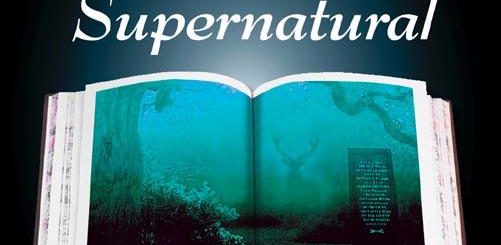Haunted London Underground, by David Brandon & Alan Brooke
Over the past 147 years, the London Underground network has grown to cover 253 miles and 270 stations, covering most of central London, extending out into Greater London and beyond. Stations, tunnels and lines have come and gone; Aldwych, Shoreditch and South Kentish Town are the stations that once were, platforms where trains no longer call, while some like Crystal Palace never even saw passengers. It’s hardly surprising then that there have been, and still are many tales of strange goings beneath the streets of London, many of which have been brought together in this volume.
 It’s a strange, but interesting book, not knowing whether it’s going for the casual interest market, or the hardcore ghost hunter or academic The cover illustration has an almost cartoonish quality to it; two ghostly figures superimposed over a detailed drawing of a Metropolitan Line station, giving the impression that it’s orientated towards a younger audience, however the content is very much the opposite. But this should not detract from the book itself.
It’s a strange, but interesting book, not knowing whether it’s going for the casual interest market, or the hardcore ghost hunter or academic The cover illustration has an almost cartoonish quality to it; two ghostly figures superimposed over a detailed drawing of a Metropolitan Line station, giving the impression that it’s orientated towards a younger audience, however the content is very much the opposite. But this should not detract from the book itself.
Opening with a brief introduction to the origins and history of the London Underground network, it primes the reader for the more detailed history which is yet to come and is good background history which covers the basics but doesn’t dwell on too much detail. This is followed by what should be essential for any contemporary book on ghosts, an explanation of what a ghost actually is. Of course it’s a vast subject area with as many theories, but the authors do well to make the overview brief, with enough information for the casual reader to be kept interested. The authors clearly know their subject citing credible references such as the excellent The Haunted: A Social History of Ghosts (by Owen Davies) on the one hand, but demonstrate an unwillingness to commit themselves the existence or not of orbs. They take a middle of the road approach stating both what orb-believers claim and (briefly) what sceptics argue. Disappointingly they fail to come down on either side of the fence, particularly as it’s clear from recent research that orbs are merely a fluke of digital photography. Some publications such as Fortean Times no longer publish orb photos as the issue has been resolved.
The largest section of the book is comprised of the haunting, listed by station and although only covering a fraction of the 270 stations, it covers most of the more well known incidents and places, the most well known of which being the long since abandoned station of Aldwych. Cconstructed on the site of the Royal Strand Theatre, it’s associated with a number of haunting including the ghost of a long forgotten actress. Then there’s Bank, haunted by the figure of a woman reputed to be Sarah Whitehead, the ‘Bank Nun’. Each listing typically includes a large piece on the history of the station as well as details of the haunting itself, though occasionally the haunting refers to a location near to a station, rather than within the station itself. Where possible, the authors have attempted to research the background details of the cases though inevitably there is a great deal of conjecture in some instances. Some, such as Bank haunting are easier to research as the story of Sarah Whitehead is documented in the archives of The Bank of England. Other stories are more reliant on eye witness testimony, such as at Vauxhall where the eyewitness account of a 7ft figure is the only one available, so there’s very little opportunity to draw further conclusions.
The book would more properly be described as an introduction to the ghosts of the London Underground. While the authors are clearly knowledgeable of both ghosts and the Underground, the book does slightly disappoint in that the listings tend to be history heavy, with the haunting aspect frequently being relegated to a by-line. It’s not clear, owing to a lack of references and a bibiliography, whether the authors have collected some of the accounts first hand, or whether they have collected the tales from secondary sources. I suspect the latter, and that would explain why some of the accounts are lacking in the detail that a investigator would be expected to have collected.
Although the book can in no way be described as an in depth investigation into the ghosts of the Tube, it is an enjoyable read, particularly if you’re interested in the history of the network. Though for the seriously interested, you’ll end up wanting more, asking more questions than the book can answer. For the subject matter, the book is a good beginning, and I can only hope that the authors are currently re-writing and going further for the next edition. I’d like to see a more in depth investigation for each haunting, including more analysis of the actual sightings, a re-examination of the eyewitness accounts (and the eyewitnesses themselves if they are still around), and conclusion drawn from this, particularly in reference to social culture now and at the time of the original accounts in a future edition. Understandably some hauntings will lack detail, but there should be a place for these, but more in depth and scientific analysis of major incidents would not go amiss.
Haunted London Underground; a basic historiography of London Underground rather than a serious analysis of the spookier goings on below London’s streets.
Pub: The History Press, £9.99




Recent Comments